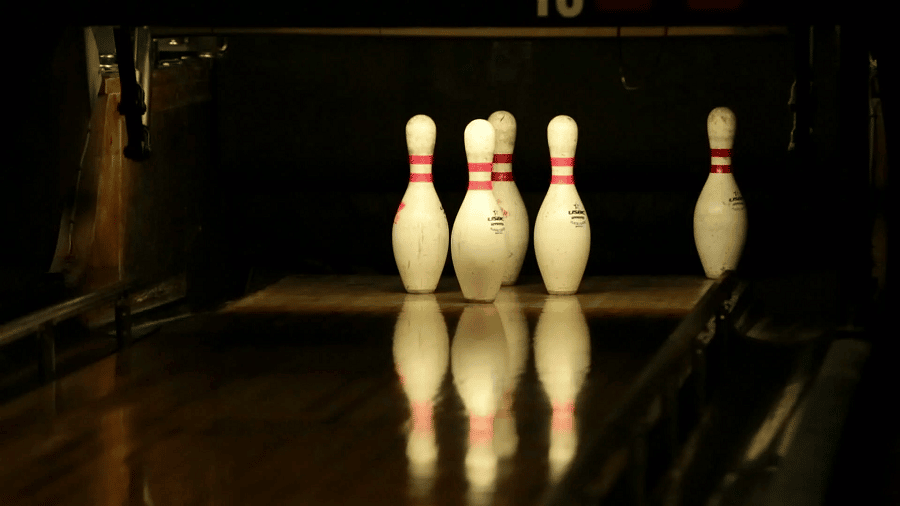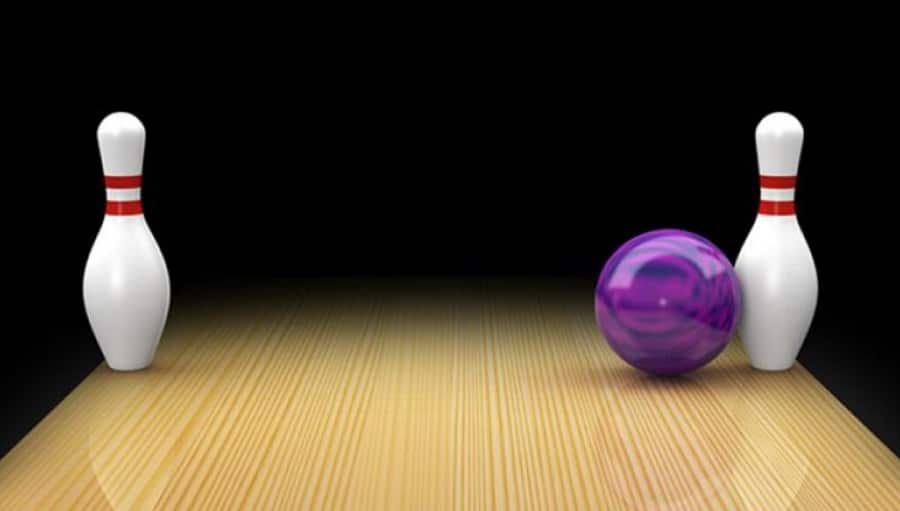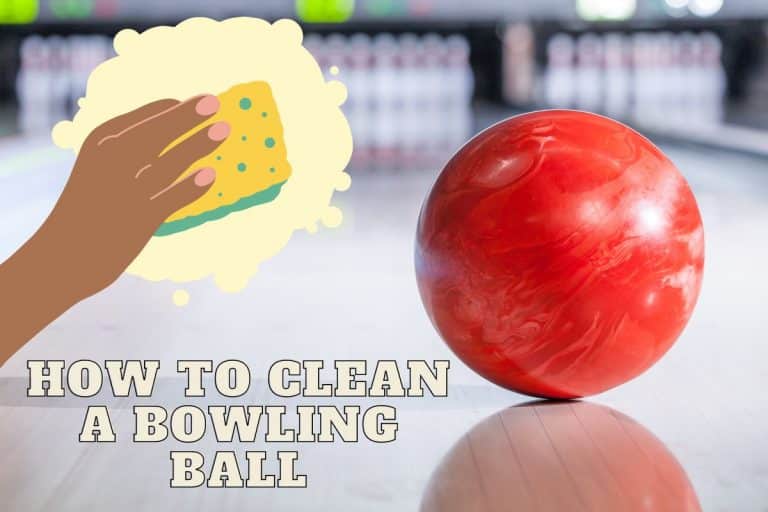How is Bowling Scored? (All You Need to Know)
Bowling is one of the oldest sports in history. That notwithstanding, many people are only starting to understand this game. So, how is bowling scored? Well, we will teach you in post. Keep reading to find out.
If you’re new to bowling, the scoring system can be confusing. It seems like many different numbers and symbols, and it’s hard to keep track of what everything means. Don’t worry! We’re here to help. We’ll explain how bowling is scored so you can understand the game better. So whether you’re a beginner or an experienced bowler, read on to learn more about scoring in this classic game.
How scoring happens in the bowling game
The bowling game is usually divided into ten frames. You have two chances (or rolls) to knock down all ten pins in each frame. The number of pins you knock down in the first roll is your “first ball” score for that frame. If you knock down all ten pins with your first ball, it’s called a “strike,” You get a score of 10 plus the number of pins you knock down with your next two balls.
If you don’t knock down all ten pins with your first ball but do so with your second ball, it’s called a “spare,” and you get a score of 10 plus the number of pins you knock down with your next ball. If you don’t knock down all ten pins with either of your balls in a frame, your score for that frame is simply the total number of pins you managed to hit.
Here is a detailed breakdown of what scoring in a bowling game entails:
1. Basic Layout of Bowling Score sheet
The basic layout of a bowling score sheet is pretty simple. There are ten frames in a game, and each has room for two rolls. The first roll is worth ten points if all of the pins are knocked down minus the number of pins knocked down on the second roll.
If all of the pins are knocked down on the first roll, it is called a strike, and the player gets to add ten more points to their score for that frame, plus the number of pins knocked down on their next two rolls. If a player knocks down all of the pins on their second roll, it is called a spare, and they get to add ten points to their score for that frame, plus the number of pins knocked down on their next roll.
2. Actual Scoring
The basic principle of scoring in bowling is to count the number of pins the bowler knocks down. It seems like a simple enough task, but there are a few different ways that you can score in bowling.
- A Bowler keeps a bowling score consisting of two columns: the first column is for the bowler's original score, and the second is for the bowler's running score. Players use the original score to track how many pins were knocked down with each ball, while players use the running score to keep track of the total number of pins knocked down in each frame.
- The most common way to score bowling is with what is known as the open-frame format. In this format, each frame is scored individually. The number of pins knocked down in each frame is totaled, and the result is the bowler's score for that game.
- Running Total
- Picking and Knocking Pins
When you go bowling, you first need to pick either the 10-pin or 5-pin. It will determine how many pins you’ll be aiming for. A game of 10-pin bowling consists of 10 frames, and you get two chances to knock down all the pins in each frame.
If you manage to do so on your first try (a “strike”), you get a bonus. You get to add 10 points to your running total for that frame, plus the number of pins knocked down on your next two throws.
3. What if You don’t knock down all pins

If you don’t manage to knock down all the pins on your first try, no worries – you get a second chance (a “spare”). For a spare, you add 10 points to your running total for that frame, plus the number of pins knocked down on your next throw.
So, in a nutshell, this is how bowling is scored: Each time you knock down all the pins on your first try, it’s a strike, and you get 10 points for that frame, plus the number of pins knocked down on your next two throws.
Each time you don’t knock down all the pins on your first try but do so on your second try, it’s called a spare, and you get 10 points for that frame, plus the number of pins knocked down on your next throw.
4. Gaining Points in Bowling
In bowling, points are scored by knocking down pins with a ball. The number of pins knocked down is counted, which calculates the score.
The number of pins knocked down is counted, which calculates the score. For example, if a bowler knocks down all ten pins in one throw, this is called a strike, and the score for that frame is ten points. If a bowler knocks down nine pins in one throw, this is called a spare, and the score for that frame is ten points.
5. What is a Strike?

In bowling, a strike is shown as an ‘X.,’ which means that all ten pins were knocked down in the first throw. A strike is worth ten points plus the points for the next two balls thrown. So, if you throw a strike in the first frame, you would get ten points for that strike, plus the points for the next two balls thrown (in this case, the first ball of the second frame).
6. What is a Double in Bowling?
A double is when you knock down all the pins with your first ball and then again with your second ball. It only happens occasionally (unless you're a professional bowler!), but when it does happen, it's always exciting. Doubles are two strikes in a row and usually result in a high score for that frame.
7. What is a Turkey in Bowling?
If you knock down all ten pins on your first roll in bowling, it's called a strike. If you do it again on your next roll, it's called a double, and if you get three strikes in a row, it's called a turkey.
Striking out multiple times in succession is one of the quickest ways to rack up points in bowling. A double is worth 30 points (10 for the knocked-down pins, plus 20 for the bonus), and a turkey is worth 60 points (30 for the knocked-down pins, plus 30 for the bonus).
The best way to score a turkey is to aim for the center of the lane with your first ball. The second ball should be thrown by you slightly to the left or right of the first one, and you should throw the third ball opposite of the second ball. It will give you the best chance of hitting all ten pins with each ball.
Other Bowling game terms
1. Baggers

In bowling, a “bagger” describes a player who consistently scores strike. A bagger is someone who bowls a lot of strikes in a row, usually four or more. The term is often used in competitive leagues, where players vise for high scores and bragging rights. Baggers are also known as “ringers” or “strike machines.”
2. Spares
To score a spare in bowling, the player must knock down all the pins in two tries. It is shown as a “/” on the score sheet. If the player fails to knock down all of the pins in two shots, it is called an open frame, and no points are awarded for that frame.
3. Gutter Balls
A gutter ball or miss is shown as a ‘-‘on a bowling scorecard. It indicates that the bowler did not knock down any pins with their ball.
4. Fouls
If you bowl a foul, it counts as a zero for that frame. You can foul in two ways: stepping on or over the foul line or having any part of your body go over the line before the ball is released. If you do either of these things, it's a foul, and your shot doesn't count.
5. Splits

A split happens when you leave more than one pin standing after your first ball. For example, if you knock down the front pin but leave the two back pins standing, that's a split. Once you know how many pins are left standing, there are different strategies for picking them up on your next shot. But splits happen to everyone, so don't worry too much if you end up with one.
6. Average
Your average is the number of pins you knock down per frame, averaged out over an entire game. It is how most people keep track of their progress while bowling since it's an excellent way to see whether you're improving from one game to the next.
Conclusion
The scoring of a regular bowling game is straightforward, even though the players are unaware of it. There are ten frames in bowling, with each bowler throwing two balls until all ten have been thrown. All frames have a combination of several possible outcomes.


![What Do Bowling Alleys Spray in Shoes? [Prevent Foot Fungus!!!]](https://www.bowlingknowledge.com/wp-content/uploads/2023/01/What-Do-Bowling-Alleys-Spray-in-Shoes-768x512.jpg)



